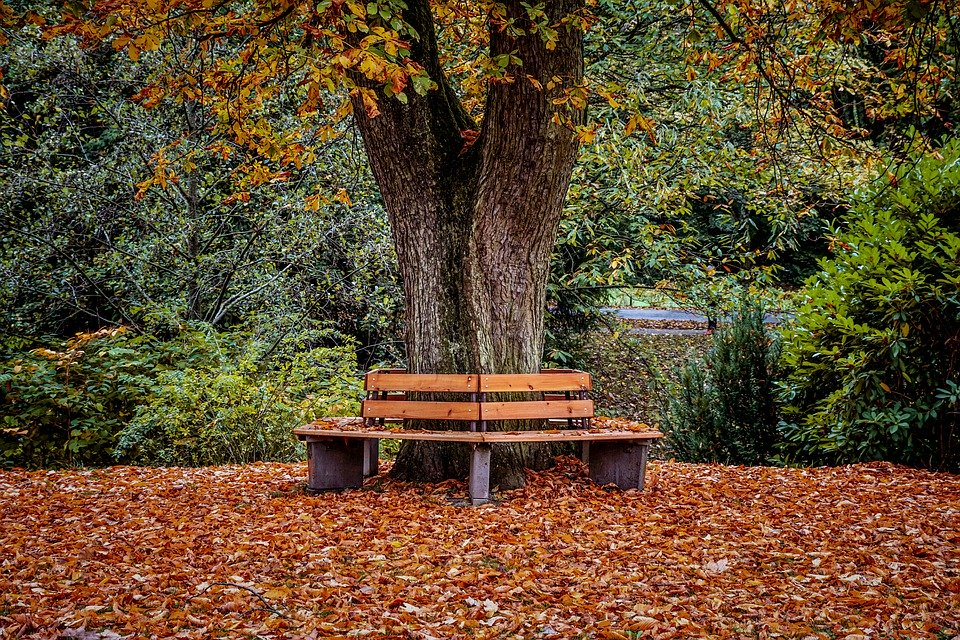- Mon-Fri 9am-4pm EST
- 888-663-4621
Although some furniture is weather-resistant, you'll increase its preservation by shielding it from harsh elements. Protecting it from the sun and preparing to winterize are the first steps in maintaining its durability.
Outdoor furniture can be used to decorate your home for entertainment with family or to create a peaceful environment. It can bring great tranquility to your outdoor area, making your house feel more like home.
However, with seasonal changes throughout the year, you will need to know how to prepare your furniture for storage. Before we get to the tips on proper storage, it's essential first to understand the importance of storing outdoor furniture.

Outdoor furniture requires proper care and attention. Your furnishings may start to show their age throughout the seasons, making them more prone to rust and mildew. If you desire long-lasting furniture, consider protecting it for the winter, and this means covering it with a tarp or storing it in a shed or storage space. Tarps should be a little loose but securely tied to promote air circulation.
Properly stored furniture will ensure durability for many seasons. If we don't take care of our patio furniture, it could start aging significantly. It will become weathered, making it inclined to more damage if it's unprotected for too long.
Furniture Damage
Over time, outdoor furniture will be prone to weather damage. Therefore, it's essential to prepare for unpredictable weather. Here are a few simple tips you can use to preserve your furniture and shield your outdoor space from the elements.
• Use Fabric Protector. After thoroughly washing your cushions, spray it with a fabric protector to guard against precipitation.
• Secure your Cushions. Consider securing your patio cushion with Velcro. Light winds could loosen the cushions, while strong winds will throw it across the yard.
• Furniture Sunscreen. Sunscreen is a suitable choice to protect your outdoor furniture on sunny days. If you have metal or plastic furniture, use an outdoor furniture protector to shield it from UV rays.
• Plan for Unpredictable Weather. It always helps to know the weather ahead of time. However, if you're not sure about the day's weather, make plans to store your furniture anyways. Light covers/tarps will help protect it from the rain and UV rays. However, it should be secured down to shield against strong winds.
Sometimes even high-quality furniture can be susceptible to damage. Before investing in outdoor furniture, make sure to choose it wisely. Find cushions with durability and use furniture protectant spray. Luckily, it doesn't take a lot of time to care for and maintain outdoor furniture.

Ways to Properly Store Outdoor Furniture
1.Clean the Furniture Cleaning your furniture is one of the most crucial steps to take before storing any furniture away. Furniture that has moisture and dirt are highly prone to mold and mildew. Since mold can spread rapidly, clean wicker, wrought iron, and plastic pieces with water and pure dish soap.
In addition, you can use Murphy Oil soap to cleanse wood furniture, rinse and let it dry. For difficult stains, use a soft brush and a mixture of water, baking soda, ammonia, and vinegar. Scrub the stains, then rinse and dry. If you eliminate the stains now, in the springtime, you'll have no problems.
Remember also to wash and dry your cushions. Cushions can be manually hand washed with Lysol and water, and for harder to clean stains, you can use bleach and water. Before placing cushions up for the season, you should ensure they are completely dry.
2. Use Protective Coating Once your furniture is clean, provide a protective coat. Pieces that are made from aluminum and plastic can be covered with a small amount of car wax. Use a wire brush to remove rust from wire furniture and silicone sealant as a protectant.
3. Furniture Cover A great way to keep your furniture protected from the elements is to either use furniture coverings or store it in a shed, and you can also protect it by throwing a tarp over them. If you have a garage, even better. Some furniture companies create covers specifically for their products.
4. Save Space by Stacking Storing small or collapsible furniture will be a simple process. Stack your tables and chairs to free up space. By doing so, all you'll have to do is cover it together with a tarp, but you can also put it in your garage or shed if you have available space.
It may seem like an inconvenience, but adequately storing and preparing furniture before the cold weather will ensure a longer lifespan for your pieces. Tarps with bungee cords work best because they repel dust and moisture.
5. Take Care of Your Fabric Manufacturers often leave recommendations on how to clean. If your furniture comes with removable covers, clean them in your washer on a gentle cycle. The label will usually tell you if you can apply products like bleach to eliminate mildew. Make sure always to wash it carefully so that you won't destroy the material or ruin the seams.
Sometimes the manufacturers may suggest machine drying. However, to be safe, let your covers airdry. Once they're done, you can place them back and put them in your storage shed. For long-lasting cushions, use a plastic storage box or a weatherproof storage bag.
Place a blanket on the cushion if you live in a scorching and humid area. By doing so, it'll prevent mildew and moisture that the bags and boxes may contribute.
6.Care for Metal and Aluminum Furniture With proper maintenance, metal furniture is the most durable option for outdoor furniture. The majority of metal furniture is covered in varnish or powder coating to prevent rust. Abrasive cleaners are not recommended because they can scratch the material. Inspect regularly for rust and always read the manufacturer's recommendations.
Metal and aluminum furniture should always be stored during the colder temperatures. The snow and rain can cause the material to rust, which will ultimately weaken it. To clean it, take a brush, water, and detergent, then use a hose to rinse the residual. You can use spray paint to touch it up, and car wax as a protectant.
7.Waterproof For shiny and water-resistant furniture, you can apply paste wax outside of its frame. If your furniture is already weather-resistant, then the process will be even more straightforward. If you have wood, make sure that you choose a product that doesn't destroy its varnish.
8.Clean the Hammock If you have a rope or cloth hammock, you can wash them with liquid detergent or a washing machine. Leave the hammock out to dry by placing it on your deck or flat surface to air dry, and afterward, you can put it in your storage shed.
9.Resin Outdoor Furniture Resin is the easiest to clean and doesn't take a lot of time, effort, and care. If there are scuff marks, spray it water and wipe it clean. If mildew is present, use a mixture of bleach, detergent, and water to remove.
10. Caring for Wood Furniture Wood furniture is the most difficult to care for. Due to its varied textures, it takes dedicated time and effort. Before cleaning it, use a small cleaning brush to loosen debris and bugs. Scrub underneath the tabletops and seats.
Spray your furniture, to dampen it, then clean in small sections with an oil-based soap. If you're a perfectionist, use a toothbrush to get in those hard to clean areas. Let it thoroughly dry before applying wood oil.
If your furniture is affected by the rain, let it dry completely before covering it because rain can contribute to mold accumulation. So, drying will prevent trapped moisture and mildew, as well.
During the warmer seasons, maintain wooden furniture by wiping it down once a week to prevent dirt build-up. Want to give your furniture a newer feel? Give it a sanding and staining treatment. By doing so, it'll allow you to exchange pieces to complement a new color scheme for décor preparations.
Final Thoughts
Remember that different materials will require a specific amount of care. Carefully read the manufacturer's recommendation and invest according to your upkeeping plans. To minimize your effort, you can provide daily care and spot cleaning. By doing so, when the season changes, all you'll have left to do is store it. If you run out of storage room, some storage units have short-term and seasonal storage options.
Always store your outdoor furniture in a cool and dry area and keep it away from moisture and humidity. Luckily, it's not so difficult to prep and store your outdoor furniture. Hopefully, these tips have helped you find efficient ways to shield it from the elements of Mother Nature.
Although some furniture may be labeled as being weatherproof, it's always a good idea to stay prepared. The reality is your furniture is not equipped to be indestructible. Take time to clean it, give it the appropriate care, and store it properly. Ultimately, this will help ensure that it weathers the storm for a long time.
You must login to post comments.